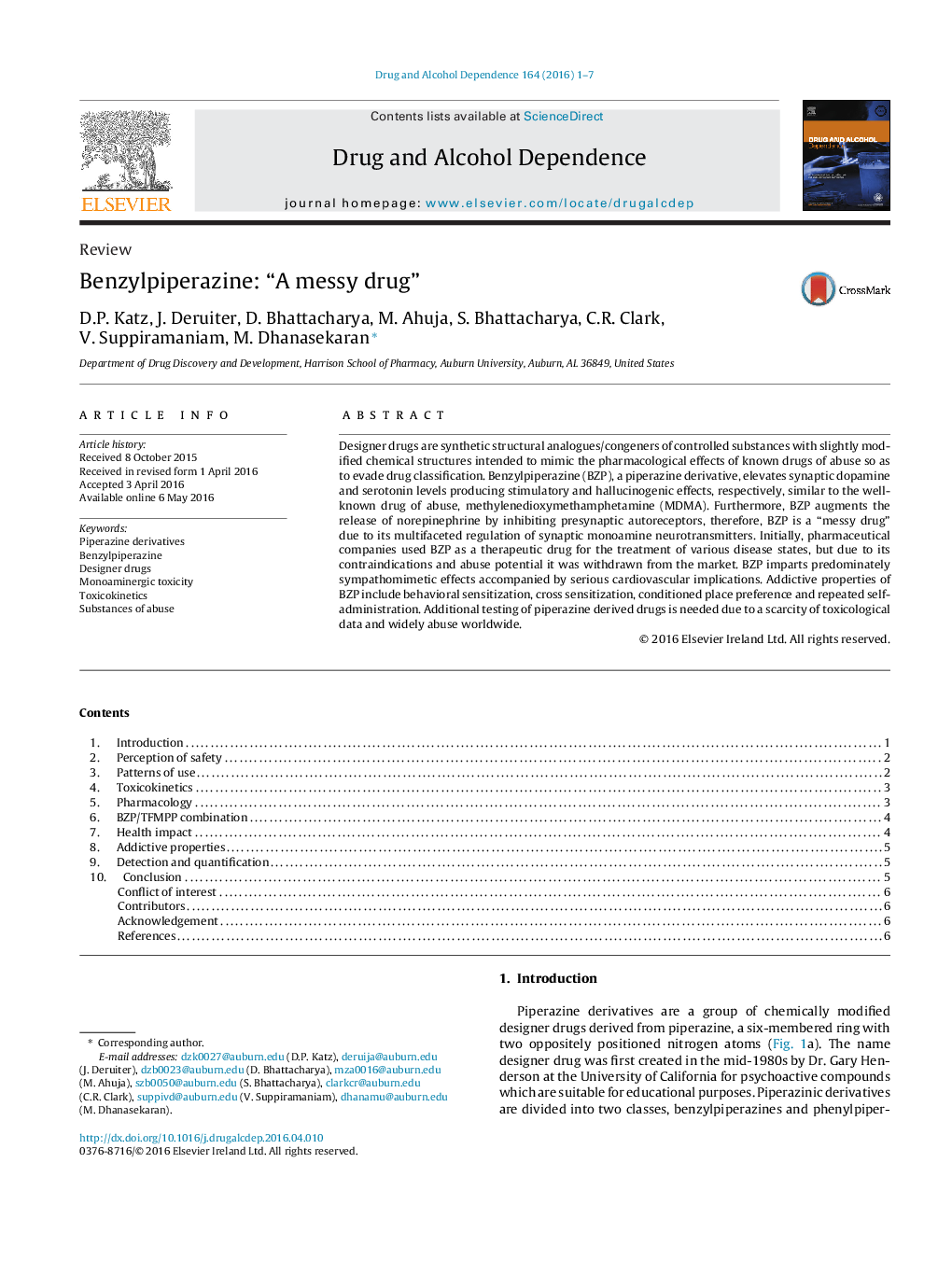| Article ID | Journal | Published Year | Pages | File Type |
|---|---|---|---|---|
| 7503699 | Drug and Alcohol Dependence | 2016 | 7 Pages |
Abstract
Designer drugs are synthetic structural analogues/congeners of controlled substances with slightly modified chemical structures intended to mimic the pharmacological effects of known drugs of abuse so as to evade drug classification. Benzylpiperazine (BZP), a piperazine derivative, elevates synaptic dopamine and serotonin levels producing stimulatory and hallucinogenic effects, respectively, similar to the well-known drug of abuse, methylenedioxymethamphetamine (MDMA). Furthermore, BZP augments the release of norepinephrine by inhibiting presynaptic autoreceptors, therefore, BZP is a “messy drug” due to its multifaceted regulation of synaptic monoamine neurotransmitters. Initially, pharmaceutical companies used BZP as a therapeutic drug for the treatment of various disease states, but due to its contraindications and abuse potential it was withdrawn from the market. BZP imparts predominately sympathomimetic effects accompanied by serious cardiovascular implications. Addictive properties of BZP include behavioral sensitization, cross sensitization, conditioned place preference and repeated self-administration. Additional testing of piperazine derived drugs is needed due to a scarcity of toxicological data and widely abuse worldwide.
Related Topics
Life Sciences
Neuroscience
Behavioral Neuroscience
Authors
D.P. Katz, J. Deruiter, D. Bhattacharya, M. Ahuja, S. Bhattacharya, C.R. Clark, V. Suppiramaniam, M. Dhanasekaran,
